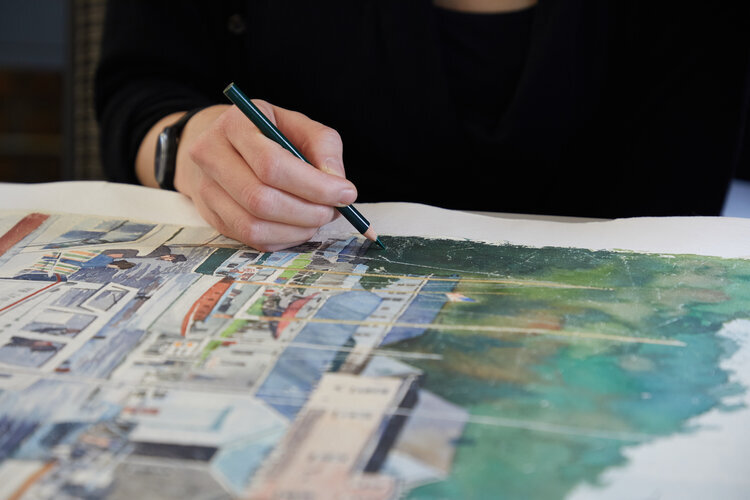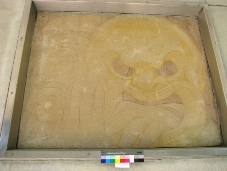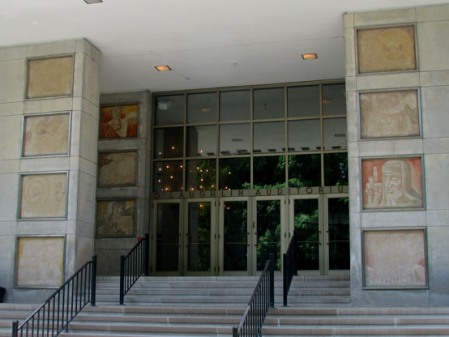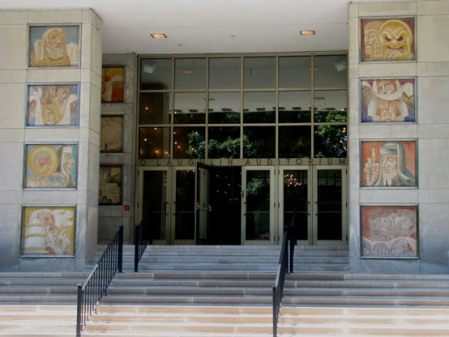By Kathryn Campbell, Assistant Paintings Conservator
The Chicago Conservation Center recently conserved outdoor frescos painted in 1955 by Jean Charlot located at Saint Mary’s College in Notre Dame, Indiana. Jean Charlot was born in France in 1898. He moved to Mexico in the 1920’s and joined up with the muralists Diego Rivera, Jose Orozco and David Alfaro Siqueiros. He died in Hawaii in 1979.
(Above) Before treatment view of frescos.
The frescos at Saint Mary’s College, seen here before treatment, were created using a true fresco method. This method involves applying a slaked lime and filler mix to a prepared wall and then painting on this wet plaster with pigments dispersed in limewater. The artist only has a window of 12 hours to paint on the plaster. The chemical reaction of the lime with carbon dioxide in the air results in a hard calcium carbonate shell forming around the pigment particles binding the pigments to the wall. Depending on the thickness of the plaster, the process of forming a hard calcium carbonate layer can take months since the outer hardened layers act as a barrier to the air needed by the inner layers for the reaction.
(Above) Before and After: St. Genesis-Drama is located in the top right outer grouping.
Water is the biggest enemy and cause of deterioration to frescos in several ways. If water gets to unreacted lime, it can dissolve the lime and undermine the stability of the surface. Moisture on the surface can get into any cracks allowing freeze-thaw cycles to break off layers of the plaster. Materials dissolved in the water can also form salts as it settles out of the water and the growing of these salts can slowly break off the surface.
(Above) The added color was matched to the original pigment seen at the top.
The treatment of the Saint Mary’s frescos involved three steps. First we determined what remained on the original surface and researched the artist and materials, then we compensated for the loss of pigmentation that occurred over time, and finally we consolidated the surface to retain the loose pigmentation. As shown in the before pictures, the inner frescos were more protected from the elements and suffered less deterioration. The outer frescos, however, were no longer readable as the subjects they were intended to depict. The materials used by the artist were found in his original materials requests. Indications of the placement of the colors were determinable from the pigment left in the incised lines and along the frame edges where the caulk had protected pigment from the weather. Using this pigment information, black and white photos from when the paintings were new, and consultation with Marcia Rickard, an art historian and Charlot scholar at Saint Mary’s College, we were able to apply pigments to return the frescos to a state where the viewer can understand the original intent and meaning of the frescos.
(Above) Original color remained in the incised lines and where the frame protected it.
(Left) Before treatment (Right) After treatment, the subjects of the frescos can finally be enjoyed.









